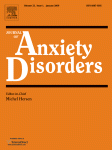Self Medication as a Marker of Risk of DSM Diagnosis along Axes I and II


Self Medication as a Marker of Risk of DSM Diagnosis along Axes I and II
A Review of:
Robinson, J., Sareen, J., Cox, B. J., & Bolton, J. (2009). Self-medication of anxiety disorders with alcohol and drugs: Results from a nationally representative sample. Journal of Anxiety Disorders 23 (2009) 38–45.
by Major, C. T.
Earlier studies that correlated anxiety and substance abuse typically treated these conditions as overarching categories, and often hypothesized that self medication for anxiety may cause the substance abuse disorder. In contrast, Robinson et al. (2009) have available the results of the National Epidemiologic Survey on Alcohol and Related Conditions (NESARC), a longitudinal study that surveys self-medication as a behavior separate from comorbid DSM disorders including substance abuse. As a result, the authors observe that self medication may be a significant marker of risk of diagnosis of various DSM disorders. The potential clinical value of such a finding is that the data might support adding questions about self medication to instruments that detect the presence of, or rate the severity of, certain DSM disorders.
Major, C. T. (2009). Self Medication as a Marker of Risk of DSM Diagnosis along Axes I and II (3). http://psychologyalert.com/2009/02/self-medication-as-marker-of-risk-of.html
